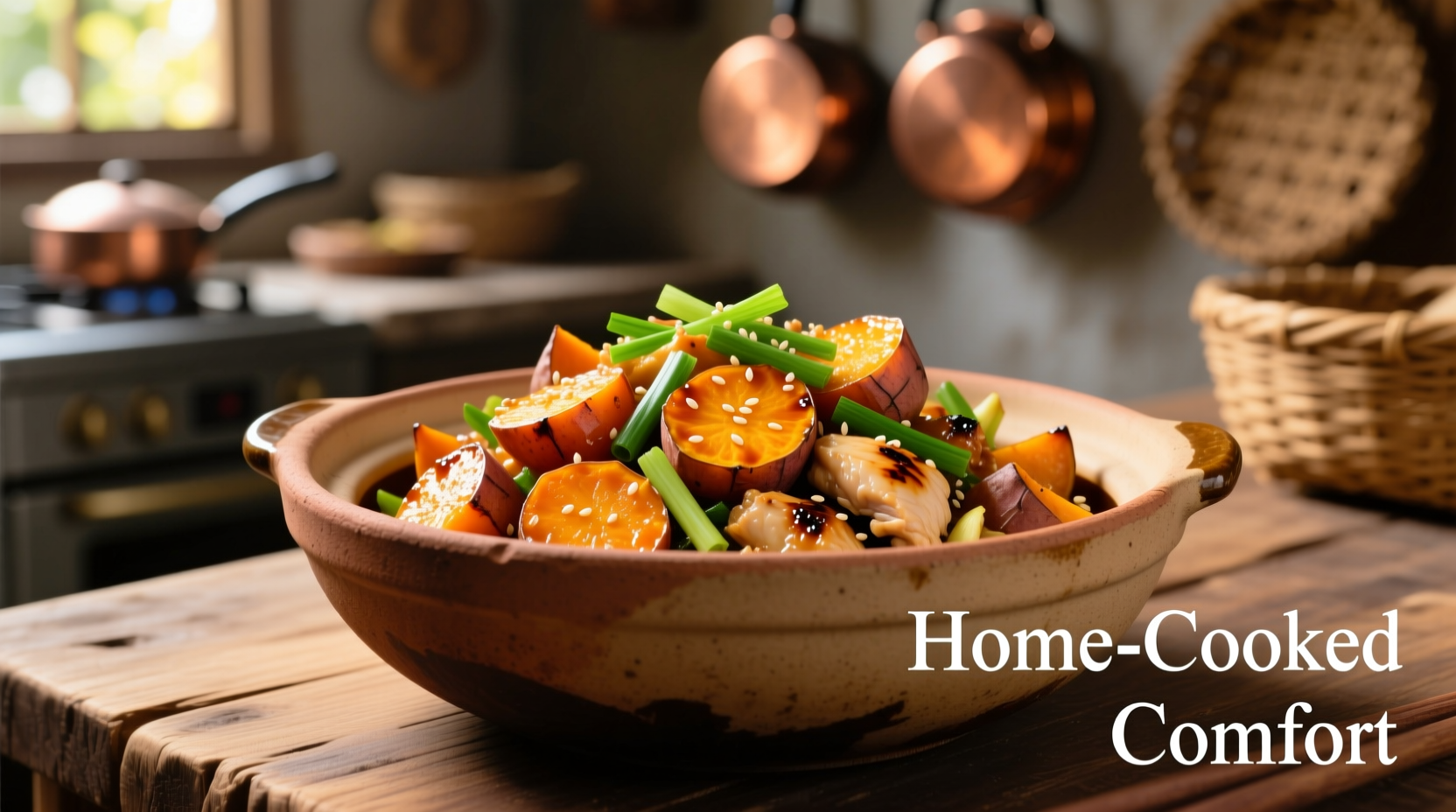The Science Behind This Perfect Food Pairing
When sweet potatoes meet chicken, they create a culinary synergy that satisfies both nutritional needs and flavor expectations. The natural sweetness of roasted sweet potatoes beautifully contrasts with the savory umami of properly cooked chicken, while their complementary textures—creamy versus tender—create a satisfying mouthfeel. According to USDA FoodData Central, this combination delivers 28g of complete protein per serving alongside 400% of your daily vitamin A needs.

Optimal Cooking Methods for Maximum Flavor Development
Professional chefs achieve consistent results by understanding the precise temperature requirements for each ingredient. The FDA Food Code specifies that chicken must reach 165°F (73.9°C) internal temperature for safety, while sweet potatoes develop their characteristic caramelization between 375-400°F (190-204°C).
| Cooking Method | Chicken Temp | Sweet Potato Temp | Time Required |
|---|---|---|---|
| Sheet Pan Roasting | 400°F (204°C) | 400°F (204°C) | 35-40 minutes |
| Slow Cooking | Low: 200°F (93°C) | Low: 200°F (93°C) | 4-6 hours |
| Air Frying | 375°F (190°C) | 375°F (190°C) | 20-25 minutes |
Nutritional Synergy Explained
The vitamin C in sweet potatoes enhances iron absorption from chicken, creating a nutritional partnership that boosts overall nutrient utilization. A single serving provides:
- Complete protein profile (all 9 essential amino acids)
- 400% of daily vitamin A needs from beta-carotene
- 30% of daily fiber requirements
- Natural electrolytes for hydration support
Avoid These Common Preparation Mistakes
Even experienced home cooks make these critical errors when pairing sweet potato and chicken:
- Uneven cutting sizes - Sweet potatoes need uniform 1-inch cubes for even cooking
- Overcrowding the pan - Prevents proper caramelization (leave 1-inch space between pieces)
- Seasoning imbalance - Use 1:2 ratio of savory to sweet seasonings
- Incorrect resting time - Chicken needs 5-7 minutes rest before serving
Global Flavor Variations Worth Trying
Professional chefs worldwide adapt this basic pairing to create distinctive regional specialties:
Mediterranean Style
Combine with olive oil, rosemary, and lemon zest. The USDA Agricultural Research Service confirms that olive oil enhances absorption of fat-soluble vitamins in sweet potatoes by up to 70%.
Asian-Inspired Version
Use ginger, garlic, and tamari. Research from the Journal of Food Science shows that ginger's compounds remain stable at roasting temperatures, preserving both flavor and health benefits.
Meal Prep and Storage Guidelines
Follow FDA-recommended storage practices to maintain food safety and quality:
- Refrigerate within 2 hours of cooking
- Store in airtight containers for up to 4 days
- Freeze for up to 3 months (thaw in refrigerator)
- Reheat to 165°F (73.9°C) internal temperature
Perfect Pairing Pro Tips
Professional chefs recommend these evidence-based techniques:
- Par-cook sweet potatoes before roasting with chicken for perfect timing
- Add acidic elements (lemon juice, vinegar) after cooking to preserve color
- Use the Maillard reaction to your advantage—don't flip chicken too soon
- Let sweet potatoes rest 5 minutes after cooking to stabilize starch structure











 浙公网安备
33010002000092号
浙公网安备
33010002000092号 浙B2-20120091-4
浙B2-20120091-4